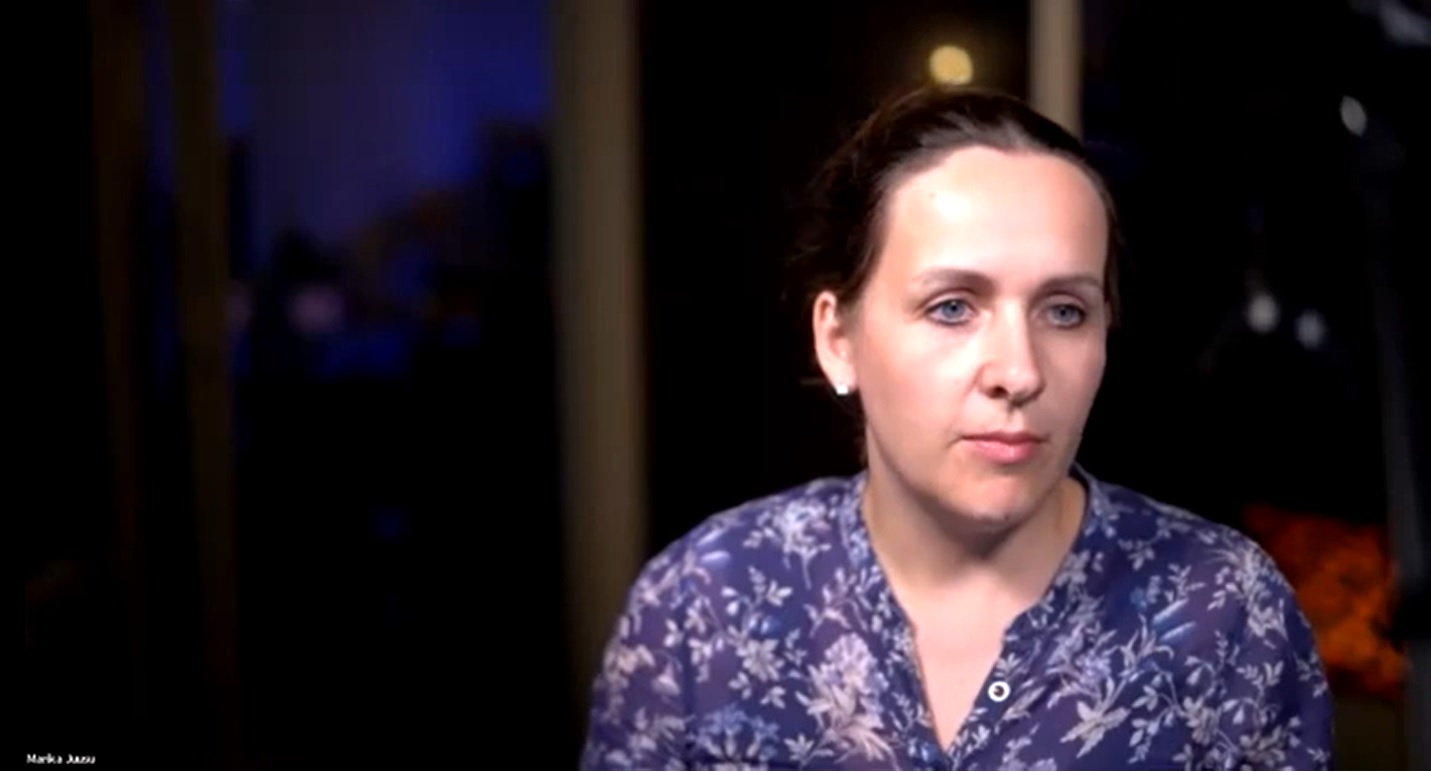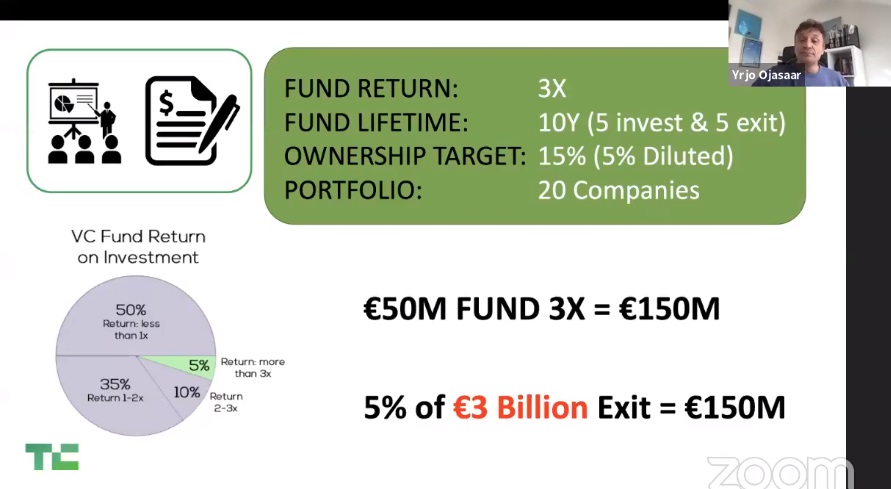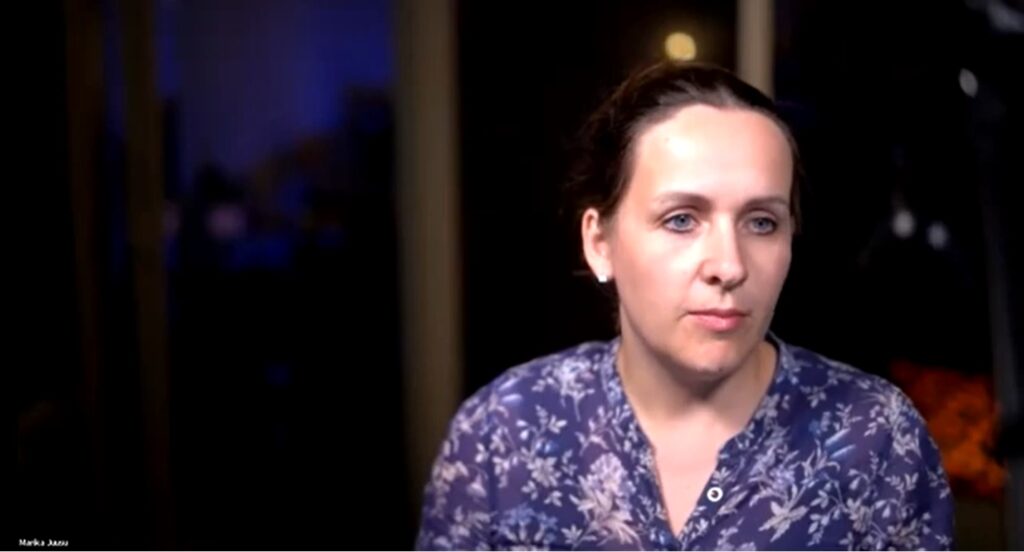Category: Academy
Webpage construction in WordPress by Maria Juusu, Inhoud (in EST)

Moreover, WordPress is free software: you are free to download, install, use and modify it to match your needs. You can use it to create any kind of website.
Find more from the full workshop, check the Prototron YouTube channel here.
Workshop “A great one pager” with Jana Budkovskaja

Prototron is a fund founded by Swedbank, TalTech and the Tehnopol Science and Business Park to finance prototypes of technological ideas so that world-changing ideas and products reach the market faster. By today, Prototron has financed 92 smart ideas with a total of more than 1.7 million euros and the teams have engaged more than 59 million euros as secondary investments.
The green round will be co-financed by the Estonian Republic from the Environmental Investment Centre programme.
How to find product-market fit by mentor Viesturs Sosars, TechHub Riga

Step 1
Make your assumptions (hypotheses) about:
– Customers
– Their contexts and needs (possible problems)
– Key expected value propositions of the solution (your product)
– (Minimum) necessary functionalities of the product
– Revenue (monetization) model(s) of the product
Step 2
Test and validate your Market assumptions:
– Customers
– Their contexts and needs (possible problems)
– Key expected value propositions of the solution (your product)
Find more from the full workshop, check the Prototron YouTube channel here.
How to rapidly validate your business idea and beat the failure by Evert Eero, IdeaTest

The video gives you idea why and how to pretotype – validate your idea with right (your own) DATE to beat the failure and answer the question “Should we built it?”.
Opinions + Ideas = Thoughtland
Data beats Opinions
Test More Ideas, Faster
Look for minimum time, effort and money
Find more from the full workshop, check the Prototron YouTube channel here.
Introductory course “How to get things done?”

At the Prototron webinar, Paul Vaher talked about how to actually get things done and gave us a five-step guide to increasing personal effectiveness. A small summary is in front of you, but it is definitely worth watching the webinar itself.
“Our minds are not designed to hold ideas, but to generate them.” Such a line of thought has been written by Dave Allen, author of the book Getting Things Done.
A five-step journey to become a master of doing things.
Step One – Make it clear who has your attention.
Write down on a piece of paper all the things that are currently moving in your head. Don’t evaluate them or try to explain them, just make a simple list of keywords. Try to notice how you feel now that all these things are memorized on paper.
NB! Instead of keeping things in your head, save them to some external media: a sheet of paper, a booklet, a calendar notebook, a Word document.
Step Two – Find out what needs your attention.
Take the first keyword from the list and find out what it is.
NB! Try to control when you do something instead of facing another matter of urgency.
Step Three – Organize things that require attention.
Divide things that require action into categories:
- Projects – lasts a long time and contains many small tasks;
- Calendar – The activity is related to a time variable;
- Next action – A specific action you can take. For example. Call Priit and make an appointment to inspect the car.
- Waiting – The activity cannot be performed at this time because it is behind someone else’s activity. Non-actionable impulses;
- Trash – keep as a reference – put it in your “Bucket list”
NB! Clear categories help you to have an overview of the tasks ahead. Confusion hides important topics that need your attention.
Step Four – Reflect.
NB! Keep your finger on it so that your categories are still categories and don’t turn into similar piles of confusion over time.
Step Five – Take action!
Now you have an overview of the important tasks to do.
NB! Start doing things.
With these simple five steps, you can earn privilege to sing in the shower:“I belive I can fly“
Be sure to check out Paul Vaher’s webinar and a tip to save time: put video on the acceleration. It is perfectly understandable, what Paul is saying.
Mistakes worth of million euros

Keep in mind that these mistakes are not one-offs but systematic miscalculations and are therefore often overlooked.
Let us introduce: millions of euros worth of research over the years that Vladimir accidentally and reluctantly paid for.
Here is a TOP list of his mistakes.
1. I did not understand or renew my role in the company.
Starting a business, we are the holy trinity of business. This means that we embody the CEO, the founding member, and the investor at the same time. Each role has its own function.
– The founder is an icon whose image is standing on the wall.
– The shareholder is capitalist, looking for good investment opportunities and thinking in a long term;
– The CEO manages the company. Quoting Vladimir: “CEO gets shit done!”
2. I wasn’t looking for mentors.
Mentors provide important knowledge. There is no need to be afraid that if you ask for instructions, you are in trouble. Mentors usually enjoy mentoring.
3. I did not make difference between reactive and proactive behavior.
If your day is spent answering random emails and phone calls and dealing with unexpected tasks, then you are reactive. When you work like this, you´ll burn out soon because you never feel like something has been done. Be proactive.
4. I neglected the company’s finances.
Profitability creates convenience. At a time when money is tight, every move is thought through. You should look at each outgoing pile of money and think about whether it could be sent to a better place. So it would invite more friends back home.
5. I did not interview every job candidate.
If you take that time, you will be able to build a trusting and personal relationship with the new team member. Your vision and ideology will become clear to the new employee before the first day of work. The candidate provides good information on how the company looks to the outside viewer.
6. I didn’t take care of myself.
A CEO is an example whose job it is to make good decisions. Poor health, domestic worries, stress, and financial problems do not contribute to the decision-making process. The team reflects the leader. If you live in distress, your employees and your entire company will soon live there.
7. I didn’t work on SUPER exciting projects.
Yes, we have to make rational decisions about which projects to undertake, but from time to time we also have to come up with a task that will keep you awake at night and thrill your creativity.
So. We will not send you a bill. Use the knowledge you gained and write one million euros in the assets of the training budget. Of course, what is written here is just the tip of the iceberg, and Vladimir’s fruity descriptions of experience are definitely worth checking out from the webinar.
Marketing in social media: do you have a plan?

The most important thing is strategy. You have to have a plan, what are You doing on social media. If You don´t have it, it is all headache every single day.
Here´s a 7-step guide to success:
- Take time to define a strategy.
- Figure out the format you plan on using.
- Think about the content types that will appeal to your audience. Do your research. Brainstorm ideas. Create.
- Share your content across the key content distribution / social platforms.
- Track the key metrics, and map these to your goals.
- Be aware of the main sharing triggers. Be sure to work on emotions!
- Always double-check your work.
Be funny, smart, controversial, moving, sexy, shocking, cool – you have to stand out from your competitors, you have to move people.
Now, that you know that, conquer the world.
Before that, it might be a good idea to check Marko´s webinar one more time.
There are two Cs in a great team

What if I don’t want to build a team? What if I want to do it all by myself? Then you are faced with mountains of tasks, where climbing destroys your health, and soon you probably open a fast-food kiosk. I recommend watching this webinar because the example of my fast food kiosk is dangerously out of context.
It is worth being picky when putting together a team because the wrong person can be a heavy burden for a start-up. There are two Cs in a great team: Competence and Character.
It is important to divide tasks according to people’s strengths. When choosing team members, choose those who complement you and pay attention to what roles are over or missing in the team.
As a leader, you have an important role in explaining the mission, vision, inspiring and motivating the team. In time group members begin to discover each other’s peculiarities and conflicts may arise. Here, as a leader, you have to intervene again, help the egos retreat, recall the mission, and inspire and motivate again.
Building a team is crucial to a successful project. So be sure to check out Peter’s webinar.
A brand is more than a logo

Choose one brand that you love. Now write down what exactly you love about it? Write whatever comes to your mind. It doesn’t matter if they are big or small. This will help you define what you consider important.
Now let´s jump to your company. The brand should represent you, your values, and of course the service or product you offer.
Why are you creating your own brand? Okay, you want to make money. Or do you? Is money your main goal? Maybe you are realizing a long-term dream. Why do you do what you do? I’m already excited.
“Marketing is no longer about the stuff you make, but the story you tell” – Seth Godin
You are creating this brand for… who? Yes, one answer is that for yourself, but think about your customers here. What problem are you solving? What values do you represent? With what values could a person become a fan of your brand?
What exactly do you offer? The product or service should be presented in two sentences. Honestly, most people don’t bother to read more. If you’ve read this article so far, take off your hat. You are one of the few.
What unique value do you bring to your customers? You may also have heard the acronym USP. If not, google it.
Make sure your sales texts are right in front of your eyes. No, we’re not talking about SEO or targeted social media posts, we are talking about creating a customer’s profile.
Define your customer – How old is he? Let’s call him Juss. Where does Juss live, what does he do, how much free money does he have? For example, I sell milk. My client could at least tolerate lactose. Ideally, my client will not experience severe abdominal pain when consuming my product. Now make a more detailed and better customer definition with your product/service.
Understand his preferences – What values influence his consumption decisions? Example: I tried, really hard, but vegetarians didn’t start drinking my cow’s milk. I had to review my client’s preferences.
Assume his needs and expectations – What is missing from his life? What does Juss want from life? What are his expectations regarding your service/product? Example: My customers expected me to pack milk, but I sprayed them with cow dung. I learned that milk should still be packaged in some way.
Choose the right channels and messages to reach your customer – List the available channels, use customer data and analyze whether you are using the right channels to reach your target audience. All channels can, but do not have to be sales channels. Marketing channels must lead to sales channels. Complete the profile. A common mistake is that the profile is half full.
The important thing number two: Contacts must be visible because people don’t even bother to look for them. That is a fact!
And we got to the end. You probably have several pages of exciting material written down about communication, marketing, and sales. Good! You can always look at the webinar again.
Test: are you ready to present your business idea to an investor

At least that was the impression of the conversation with our long-term investor guru Yrjö Ojasaari, who, with his pleasant charm, is like Mel Gibson in the film “What Women Want”. Instead of women, we looked into the world of investors.
Yrjö introduced us to the secret – rationally logical thinking of investors, when they are making investments desisions. To avoid confusion, we are talking about investment funds, which must base on rules, promises, and responsibilities to their investors, when making choices. We are not looking into the thoughts of billionaires or business angels, cause they can allow themselves to be more emotional.
In time, the rules that investment funds follow when selecting companies and investments for their portfolio have been laid down:
- the fund must return a triple fee;
- the life of the fund is 10 years, of which the first 5 are intended for entry and the last 5 for exit;
- they aim for a 15% stake in companies;
- there are ca 20 companies in the portfolio.
4 important aspects of how to get the investor interested
In order to catch the investor’s interest in your idea, it is not necessary to bring him flowers or wear lipstick. The investor is interested in these four simple aspects:
1) the importance of the problem you are solving;
2) do you handle it significantly better than your competitors;
3) how easily the number of customers can be increased;
4) how big is the market you plan to capture.
But how do investors evaluate the teams? Not the ideas, but the people who are trying to make it happen?
Yrjö: “We prefer a team to an individual, because although he or she may be a very good specialist in a certain field, he or she may not be able to divide the skills into all-important areas. We prefer teams with previous cooperation experience to teams where group relationships are still developing. We prefer teams that already have previous successful experience in some projects. People’s competencies in their field are definitely important.”
Well, that’s how investors think. If you can apply your idea to the four points brought above, your business idea is sharp ready to step in front of investors. Be sure to watch Yrjö’s presentation, where he talked about the investment behind the scenes and also answered questions. As usual, that was the most exciting part.









































facebook
instagram
twitter
linkedin